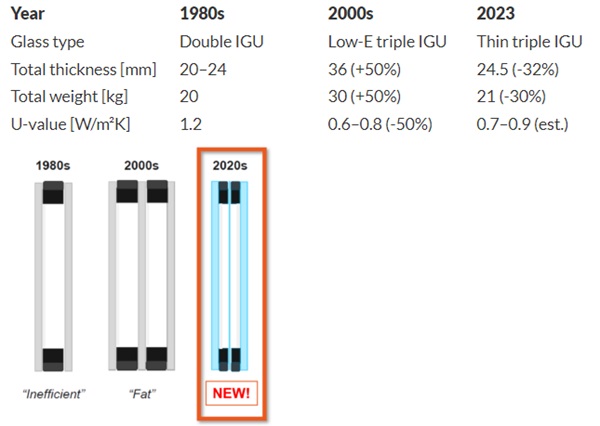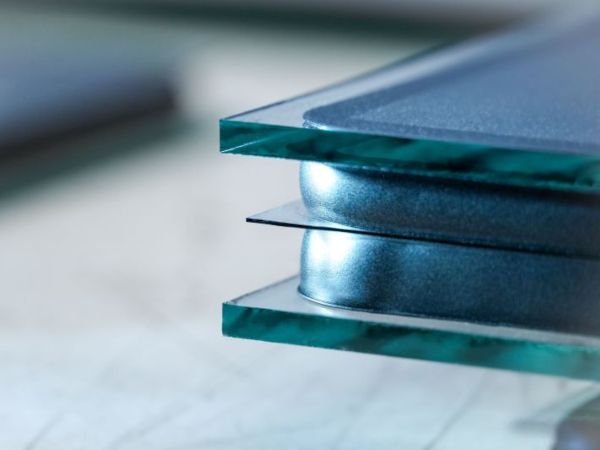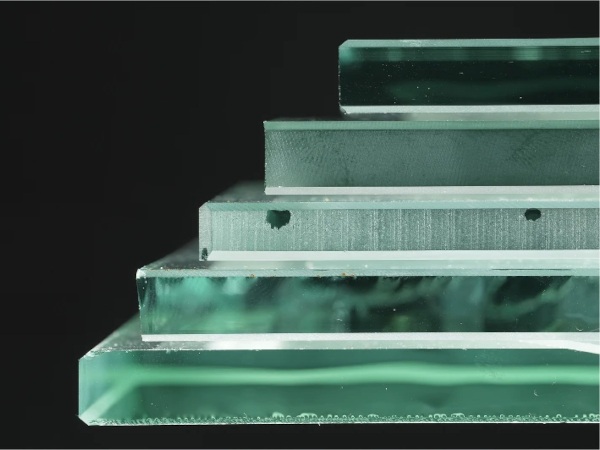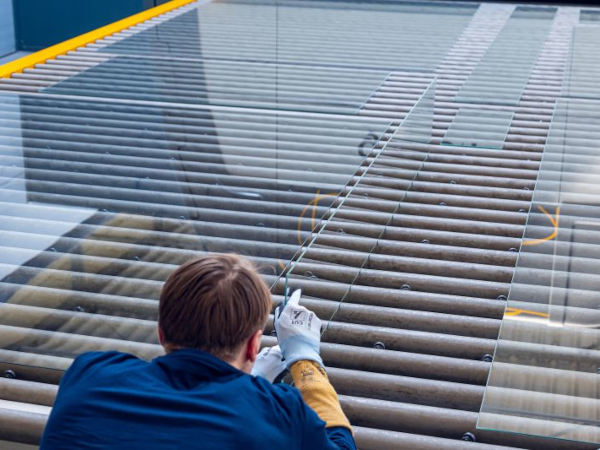Author: Uwe Risle | Glaston
Source: glastory.net
The push for better thermal performance in insulating glass units (IGUs) is greater than ever. For example, the 2024 Energy Star guidelines in the U.S. have set a new maximum U-value of 1.05 W/m²K. A U-value measures how well a window insulates against heat loss; a lower number means less heat escapes from a building. For many homeowners and builders, the challenge lies in upgrading outdated, low-efficiency windows without complicating the replacement process. The solution? Thin triple insulating glass units.
Why thin triple IG units are gaining popularity
The push for improved building energy efficiency has made this type of glass a hot topic in the industry. This advancement is rapidly gaining traction – and for good reasons.
Thin triple insulating glass units deliver high-performance glazing in a slimmer, more efficient package.
These units deliver much better U-values than traditional double glazing – while also addressing the issues of thickness and weight.
"Thin triple IG units are particularly well-suited for residential applications in both new construction and renovation. For new builds, their reduced weight simplifies transportation and installation. And functional issues such as the closing problems of heavy sliding windows can be eliminated."
However, they are especially beneficial in renovations, where replacing inefficient double IG units by traditional triple IGU, can often be challenging. Thin triple units not only provide a significant performance upgrade over double units but also fit neatly into existing window frames, making them ideal for easy window upgrades.
Key differences between thin triple IGUs and other insulating glass types
IGUs have evolved significantly since their first use. In the 1980s, double-glazed units typically measured around 20 mm thick. By the 2000s, Low-E triple IGUs had emerged, with a thickness of approximately 36 mm. These triple IGUs offered enhanced insulation, but also came with a 50% increase in both thickness and weight.
"Perhaps the most significant difference between thin triple IGUs and their conventional counterparts is thickness. Traditional triple units typically outer panes of 3-4 mm glass and a 3 mm center pane. In contrast, thin units use a very thin 0.5 mm glass for the center pane. This reduction in thickness makes the unit lighter, slimmer and more compact."
With a total thickness of only 24.5 mm, thin triple IGUs still maintain the same high performance as traditional triple IGUs.

Overcoming production challenges
The development of thin triple IG units required overcoming significant technical challenges. Traditional manufacturing methods, where spacers are first applied to the center glass pane, proved unsuitable for thin triple IGUs. When 100 °C TPS® material is applied to delicate 0.5-millimeter glass, the pane bends, making the conventional approach impractical.
A novel production technology developed by Glaston applies spacers to the thicker outer panes first. This approach modifies the process completely, minimizing stress on the thin center pane and reducing the risk of breakage. The method allows for automatic production of thin triple IG units – something no one else currently offers.
"TPS® technology plays a crucial role in the production. By ensuring exceptionally high insulation values and gas tightness, it measurably enhances the performance of these units. Plus, the completely automated system reduces the need for manual handling – an essential, given the delicate nature of thin glass."
A cost-effective alternative to vacuum glass
Offering the same or superior performance at a lower cost, today’s thin triple IG units present a viable alternative to vacuum glass – another trending but costly glazing option.
Advancements like this are critical to help the world meet the growing demand for more energy-efficient housing.
What might be next? Will thin quadruple glass push the boundaries of energy efficiency even further? We’d love to hear your thoughts.
If yes Glaston has, for thin quadruple glass already a solution ready.






















